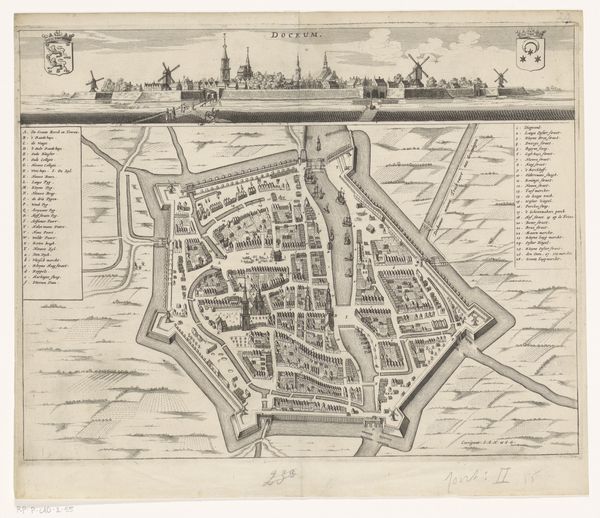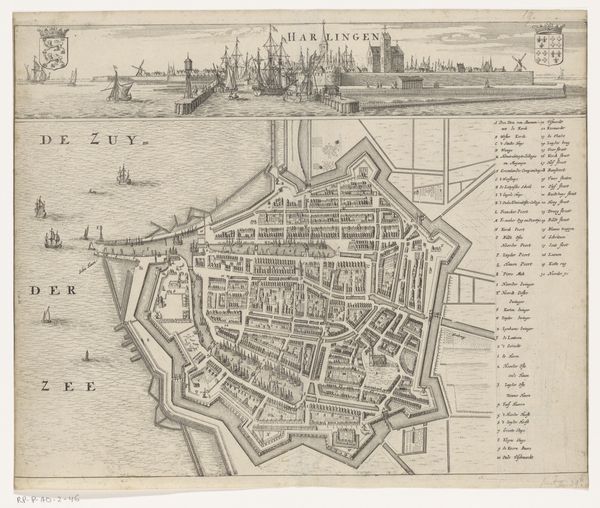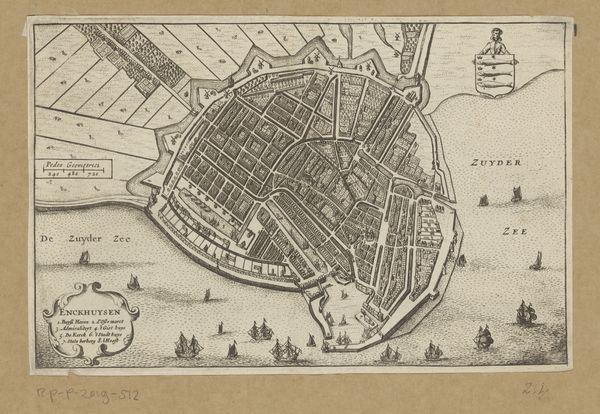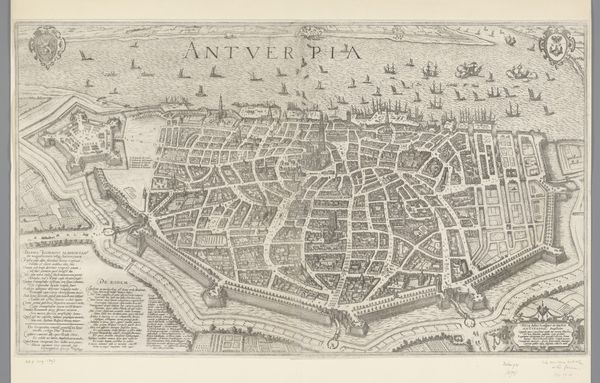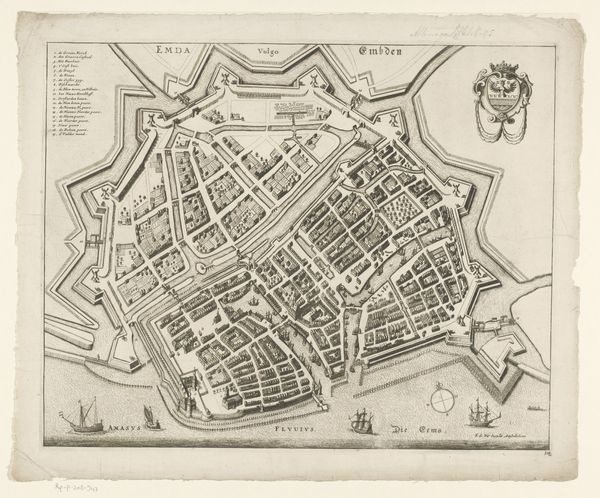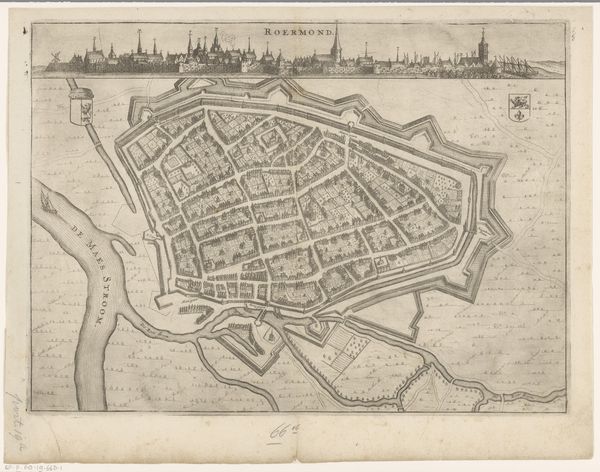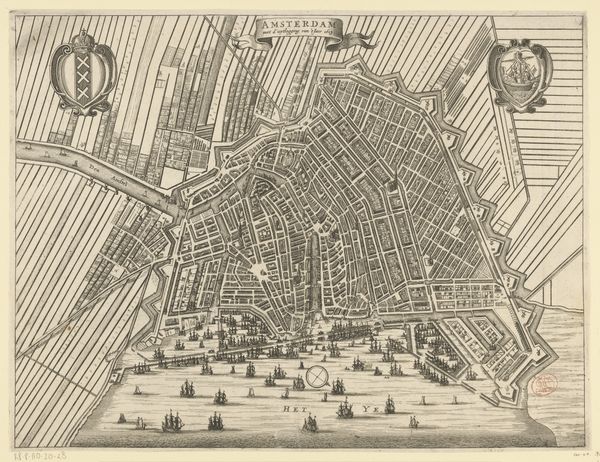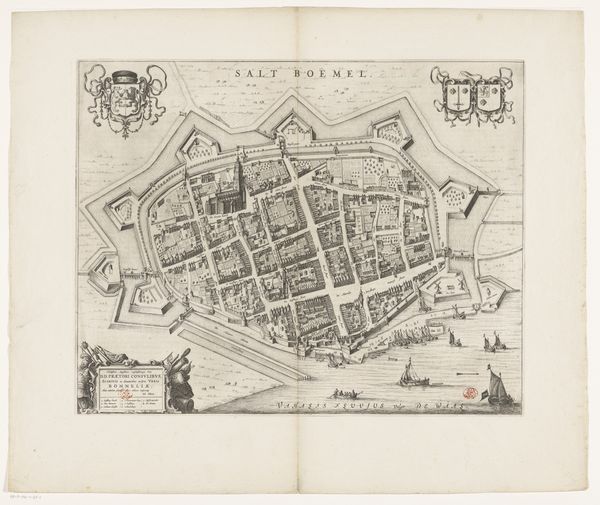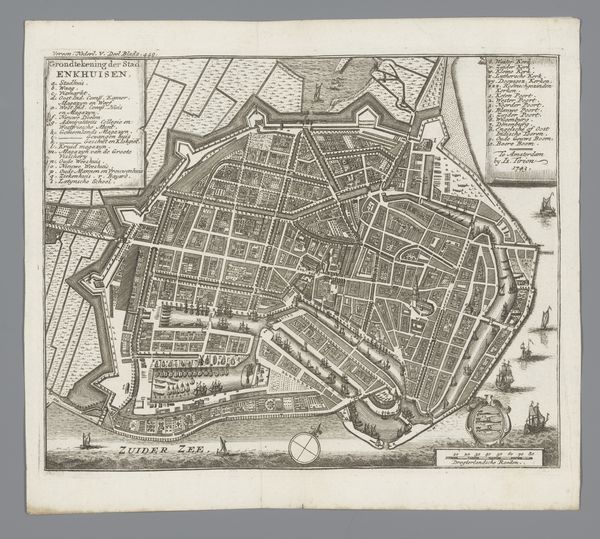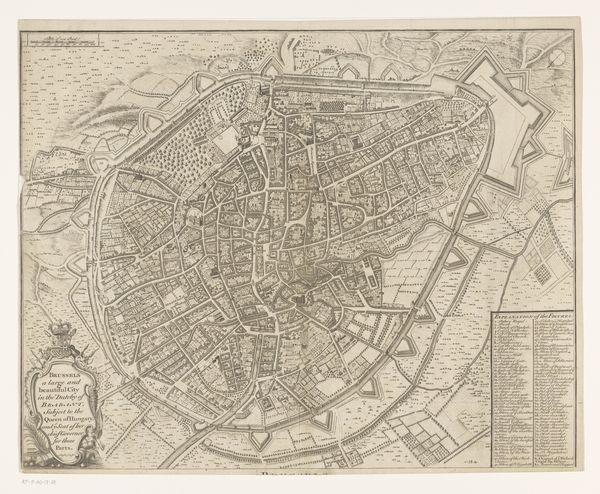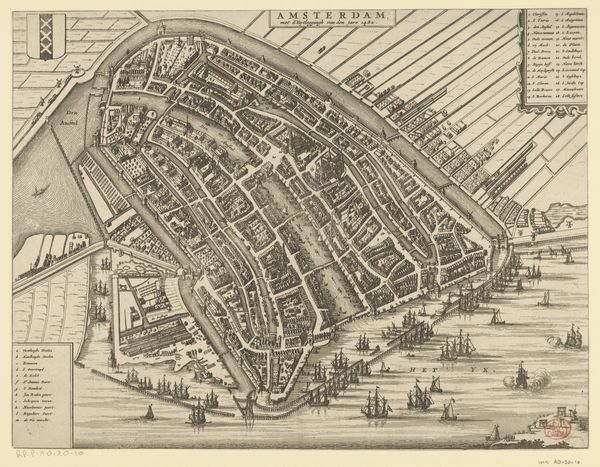
graphic-art, print, pen, engraving
#
graphic-art
#
baroque
#
pen drawing
# print
#
pen illustration
#
pen-ink sketch
#
line
#
pen work
#
14_17th-century
#
pen
#
cityscape
#
engraving
Dimensions: height 404 mm, width 518 mm
Copyright: Rijks Museum: Open Domain
Curator: Here we have an anonymous engraving from after 1657, titled "Plattegrond van Frankfurt am Main," held in the Rijksmuseum. What strikes you about this particular cityscape? Editor: The star-shaped fortifications immediately grab my attention. They project power and perhaps paranoia, like a city bracing for constant threat. The detail, however, seems devoted mostly to infrastructure, as if all history were building and protection. Curator: Indeed. Let's look closely at those details. The dense, hatched lines create distinct forms of buildings, walls, and the river Main bisecting the city. Note how the artist uses line weight to define depth and spatial relationships. Editor: The river dominates, a potent symbol of commerce, travel, and life itself. And there are those curious heraldic crests, echoing authority and local identity at the top right, bookending the composition. Curator: Consider the way the architectural precision and meticulous rendering speak to the values of the Baroque era: order, clarity, and an emphasis on structural logic. Every street is rendered; every building has its place in this cosmography of Frankfurt. Editor: The walled boundaries and fortifications, for me, speak of boundaries both physical and psychological. Frankfurt is presented as something both solid and somewhat afraid—it's claiming dominance over the surrounding geography, maybe proclaiming the cultural identity in general, yet constantly defining itself against "the other". Curator: It is interesting how the rigorous structural qualities here can be seen as an allegory for a particular mode of understanding, a framework. Is that framework embracing, as you imply, or defensive? Or simply aiming for a scientific rendering of fact? Editor: Both. Art seldom occupies only one register. It aims to depict fact—the lay of the land, the shape of its buildings—and communicate, more deeply, the cultural and even emotional context surrounding a location. That is an inescapable, unintentional symbology. Curator: Perhaps we both discover an unintended effect, but one originating from a desire, first, to understand and document material reality. Thank you. Editor: My pleasure; I find unexpected human qualities and implications hidden in every street.
Comments
No comments
Be the first to comment and join the conversation on the ultimate creative platform.
